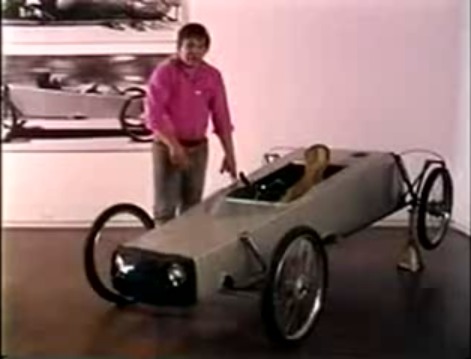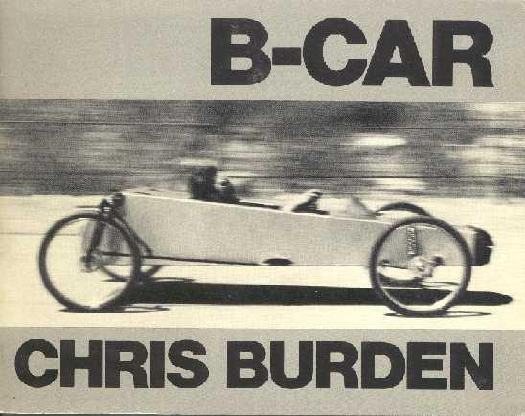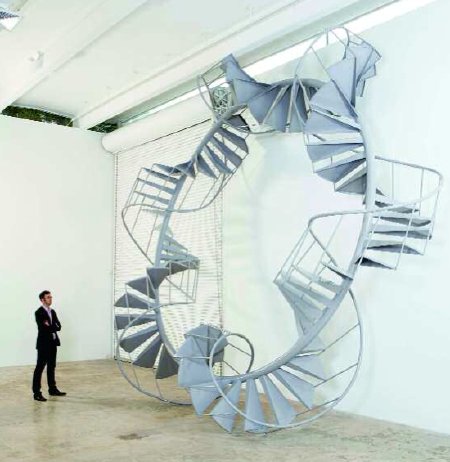
In April 1975, Burden brought something of an end to the series of extreme and/or dangerous performances that brought him such critical acclaim and notoreity. For a piece called “Doomed,” he installed himself under a pane of glass in the MCA Chicago, and refused to communicate or move until someone made a gesture to help him. 48 hours into the piece, a museum guard named Dennis O’Shea offered him a drink of water, at which point Burden got up, smashed a clock, and left.
Said Peter Schjeldahl in the New Yorker,
“Doomed” unmasked the absurdity of the conventions by which, through assuming the role of viewers, we are both blocked and immunized from ethical responsibility. In O’Shea’s case, the situation was complicated by his duty to maintain the inviolability of art works. There should be a monument to him, somewhere, which would commemorate the final calling of the bluff of art as a law unto itself.
What soon followed was B-Car. Burden:
During the two month period between August 24 and October 16, 1975, I conceived, designed, and constructed a small one passenger automobile. My goal was to design a fully operational four-wheel vehicle which would travel 100 miles per hour and achieve 100 miles per gallon. I imagined this vehicle as extremely lightweight, streamlined, and similar in structure to both a bicycle and an airplane.
Once the project was conceived, I was compelled to realize it. I set the goal of completing the car for two shows in Europe. I saw building the car as a means toward the end of driving it between galleries in Amsterdam and Paris as a performance. When I arrived in Amsterdam, I knew that the accomplishment of constructing the car had become for me the essential experience. I had already realized the most elaborate fantasy of my life. Driving the car as a performance was not important after the ordeal of bringing it into existence.

[A book about the B-Car was published by Ronald Feldman in association with his 1977 show of the car and its documentation. With the Internet, nothing is really rare anymore, just varying degrees of expensive.]
The B-Car‘s adolescent soapbox derby form and Burden’s deadpanned motivation for the project–“realiz[ing] the most elaborate fantasy of my life” resonates with Schjeldahl’s description of the artist as, “a boyish gimcracker diverting us by diverting himself.” In one sense, Burden’s ongoing use of toys, and his toy-like deployment of industrial machinery, equates artistic production as a reversion to childhood, a mix of “I’ve always wanted to do that!” and “my kid could do that!”
But it reminds me of another seemingly unassuming but obliquely profound artist, Peter Coffin, who said he made his incredible 2007 sculpture, Untitled (Staircase) because “it stuck in my mind.” [pdf] Of course, it also reminds me of John Ivers of Bruceville, Indiana, who built himself a roller coaster in his backyard. It’s called Blue Flash.

Previous Chris Burden: video of Beam Drop and other projects; Chris Burden’s TV ad
